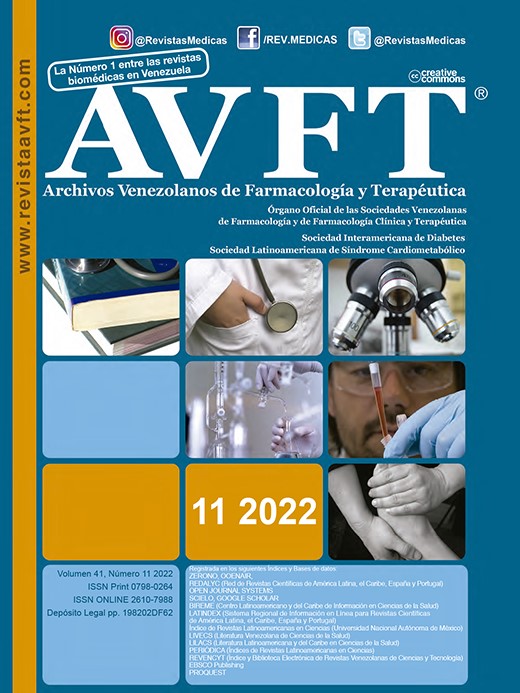Neonatal respiratory distress syndrome in the hospital General Guasmo Sur, Ecuador
Keywords:
neonatal respiratory distress syndrome, alveolar-arterial oxygen gradient, complications, mortalityAbstract
Objective: To characterize the respiratory distress syndrome in neonates (SDRN) admitted to the Guasmo Sur General Hospital and to evaluate the association between the alveolar-arterial oxygen gradient and subjets prognosis. Materials and methods: A retrospective and descriptive study with a non-experimental design was carried out in newborns diagnosed with SDRN admitted to the Neonatal Intermediate Care Unit (CIN) and Neonatal Intensive Care Unit (NICU) area of the aforementioned hospital during the period from August 2020 to August 2021. Data from medical records found in the statistics department were used to obtain information. Results: Of the 218 newborns evaluated, the predominant gestational age was preterm infants (62.8%; n=137), most of whom were admitted to the NICU (83%; n=181), the most frequent etiology of RDS was: 75 cases (34.4%) had other Respiratory Diseases; 57 (26.1%) presented grade II RDS. Likewise, 115 (52.8%) neonates required Invasive Mechanical Ventilation. Severe Pulmonary Disease prevailed with 93 (42.7%) cases, the prognosis was favorable in 43.1% (n=94), unfavorable in 56.4% (n=123) and only 0.5% (n=1) died, the association between both variables was statistically significant. Conclusion: The neonates with SDRN at the Hospital General Guasmo Sur were mostly preterm, requiring admission to the NICU for invasive mechanical ventilation due to the severity of the lung disease exhibited and the unfavorable clinical prognosis during admission. Being the alveolar-arterial oxygen gradient a potential classification tool to predict this prognosis.
Downloads
References
Dyer J. Neonatal Respiratory Distress Syndrome: Tackling A Worldwide Problem. P T. 2019; 44(1): 12–14.
Maldonado Feijoo AP, Tobar Zambrano MJ. Factores clínicos y epidemiológicos en neonatos con síndrome de distrés respiratorio agudo por aspiración meconial [Internet] [Thesis]. Universidad de Guayaquil. Facultad de Ciencias Médicas. Carrera de Medicina; 2020 [citado 3 de julio de 2021]. Disponible en: http://repositorio.ug.edu.ec/handle/redug/51577
Neira F. Síndrome de dificultad respiratoria en neonatos: perfil clínico-epidemiológico. Hospital José Carrasco Arteaga. Periodo septiembre 2018 -mayo 2019. Univ Católica Cuenca [Internet]. 2020 [citado 17 de junio de 2021]; Disponible en: https://dspace.ucacue.edu.ec/handle/ucacue/8377
Isasi Rolón CJ. Incidencia Del Síndrome De Dificultad Respiratorio y Factores Asociados De Los Recién Nacidos Ingresados Al Servicio De Neonatología Del Hospital Regional De Ciudad Del Este Periodo De Enero 2017 A Diciembre 2018 [Internet] [Thesis]. FCM-UNCA; 2019 [citado 28 de junio de 2021]. Disponible en: https://repositorio.fcmunca.edu.py/xmlui/handle/123456789/156
Hedstrom AB , Gove NE , Mayock DE, Batra M. Performance of the Silverman Andersen Respiratory Severity Score in predicting PCO 2 and respiratory support in newborns: a prospective cohort study. J Perinatol. 2018;38(5):505-511.
Abdel Baseer KA, Mohamed M, Abd-Elmawgood EA. Risk Factors of Respiratory Diseases Among Neonates in Neonatal Intensive Care Unit of Qena University Hospital, Egypt. Ann Glob Health. 2020;86(1):22.
Palacios Sacoto JA. Factores asociados a síndrome de dificultad respiratoria del recién nacido del Hospital José Carrasco Arteaga. Estudio de casos y controles. (Tesis para optar al titulo de Especialista en Pediatría). Cuenca, 2020.
Tochie JN, Choukem S, Langmia R, et al. Neonatal respiratory distress in a reference neonatal unit in Cameroon: an analysis of prevalence, predictors, etiologies and outcomes Pan Afr Med J. 2016;24:152.
Ma L, Liu C, Wang Y, et al. Mortality of neonatal respiratory failure related to socioeconomic factors in Hebei province of China. Neonatology. 2011;100(1):14-22.
Segredo Molina Y. Índices de severidad respiratoria en el paciente pediátrico ventilado / Respiratory severity indexes in ventilated paediatric patients. Rev Cuba Med Intensiva Emerg. 2017;17(1):47-59.
Moler FW, Palmisano JM, Custer JR, et al. Alveolar-arterial oxygen gradients before extracorporeal life support for severe pediatric respiratory failure: improved outcome for extracorporeal life support-managed patients? Crit Care Med. 1994;22(4):620-5.
Kuo CY, Wang J, Hsieh WS, Lo SK, Su WJ. First alveolar-arterial oxygen gradient (AADO2) in mechanical ventilation as a predictor for duration of intubation in respiratory distress syndrome. J Formos Med Assoc. 1993;92(5):402-6.
Downloads
Published
How to Cite
Issue
Section
License
Copyright (c) 2023 AVFT – Archivos Venezolanos de Farmacología y Terapéutica

This work is licensed under a Creative Commons Attribution-NonCommercial-NoDerivatives 4.0 International License.




